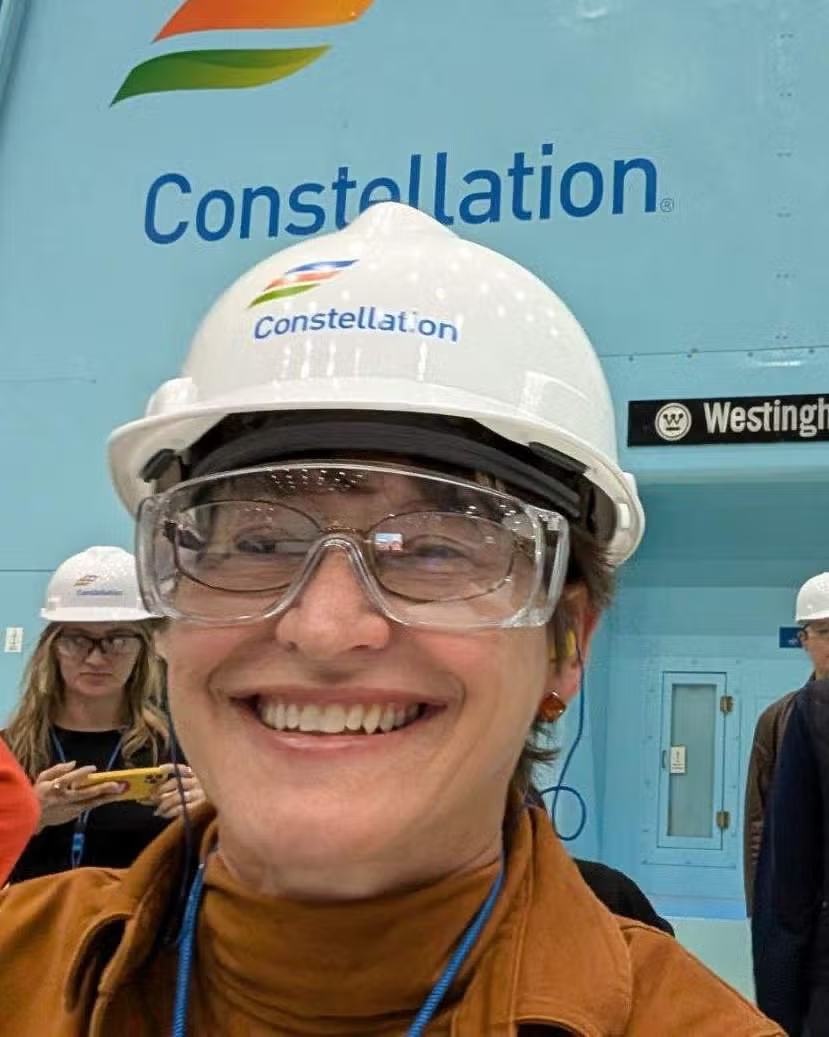This week, we sat down with our distinguished Chair of the Science, Technology and International Affairs (STIA) Concentration. The STIA Concentration equips students with quantitative skills and theoretical knowledge to prepare STIA-minded students for the rapidly evolving global challenges and opportunities we face. Professor Sabonis-Helf spoke with us about connecting the science and policy worlds, her work in energy transitions, and what she hope STIA students take into their careers.

Q: How can we bridge the gap between the policymaking and scientific communities?
A: It’s tough because they come from different planets- policymakers want quick decisions, and scientists want to carefully consider every facet. We can bridge this gap by starting early in education: doing a better job of teaching the scientific method and critical thinking early in school. Having a scientific mindset means you are eager to find out what the evidence shows- rather than bending the data to tell you what you want to know.
For policy analysts and policy makers, we need to develop a knowledge base of important emerging technologies so we can engage meaningfully in shaping the decisions about how society will use these . Scientists should also be better communicators – something that’s not usually well-integrated in their training – but since I teach future policymakers, I focus mostly on improving the science and tech literacy.
Q: You’ve done work in several countries around the world on energy transitions. Can you elaborate on some characteristics of the transitions that you have seen?
A: States reliant on hydropower (such as Georgia, Kyrgyzstan, and Tajikistan) grapple with changes in rainfall and growing international opposition to large dams. States with nuclear power or uranium (such as Ukraine, Armenia, Kazakhstan, and Uzbekistan), are making the argument that nuclear power is critical to the future and trying to ensure their place in the nuclear supply chain. The petrostates, which have been reliant on exports of oil and gas (such as Russia, Kazakhstan, Turkmenistan, Azerbaijan), have to contend with Europe’s loss of interest in fossil fuels. Everyone has their own difficulties, but the overall trend is that the challenges are specific to the resources a country has.
Q: In your opinion, what is the biggest challenge to energy transitions? How should countries overcome these challenges?
A: Energy transitions are a huge challenge- we need to change hardware and markets. Changing hardware is ambitious and takes time. Changing markets requires us to build in the true cost of things that we assumed were cost-free, such as carbon pollution. Americans tend to think of “energy transition” as something brand-new, but it isn’t true. My experience working in Eurasia after the collapse of the Soviet Union was focused on helping a number of countries begin to understand that energy could not be provided for free, and therefore the incentives and infrastructure would have to change. It was difficult, but I’ve personally seen transition happen. I expect the same will be true for this transition.
Q: How can we improve global cooperation in climate mitigation? Do you think the Paris Agreement is effective?
A: The Paris Accord seems unambitious, but it made it possible for the two countries most important to climate mitigation (the US and China) to move forward. Treaties that leave out the most important actors in transboundary problems don’t work. It was necessary to incorporate US and Chinese preferences.
Now can it remain effective? Some of the trends that are in place in energy transition will continue regardless of the US administration’s attitude towards climate mitigation. Even in the United States, some energy transition will continue. However, if the US pulls out of the UN Framework Convention on Climate Change (the US has been a member of that since 1994), it would be a huge blow to climate efforts. The Framework treaty established the systems for how nations report their data on climate, and how it is studied. If one of the lead emitters of greenhouse gases doesn’t recognize an obligation to monitor and report its emissions or to study the problem, then the treaty system begins to fall apart.
Q: You studied English literature as an undergraduate; what inspired your pivot towards international relations?
A: I had a summer internship after my junior year with a science policy educational non-profit (Student Pugwash) and that got me very engaged in science policy issues and in science writing. Due to a change in government policies while I was an undergraduate, I lost some of my federal grant money in my senior year. I was terrified at the prospect of taking out a large loan, so I dropped one of my majors (education) and graduated early with a degree in literature. I went to work for Student Pugwash, and through some conferences I ran for them, became fascinated with energy security. When I took my next job at the Rocky Mountain Institute, I was the only non-engineer in the program and was hired to help with their science writing. So I guess you could say I came to international relations through energy security, rather than the other way around.
Q: When it comes to the STIA Concentration, what skills, lessons, and expertise do you hope students will take with them after graduating from the program?
A: That scientific mindset is essential – STIA graduates learn not only to question their assumptions, but to interrogate them. I also expect each student to carry with them a specific skill that will help with analysis: something like renewable project design, data scraping, data analysis, or computer modeling. In addition to that specific skill, I expect them to have enough mastery of an area of science/tech that they can engage in meaningful analysis and discussion with technical experts. I hope that our graduates carry away a honed curiosity about new science and tech problems and possibilities, and ask the hard questions about how these will best serve societies and that they are prepared to examine emerging technologies with an eye towards what policies would best serve societies. I hope they continue to find engaging these issues to be challenging and fun. I hope they will continue to enjoy facing new, unexpected policy challenges. I hope that they will remain in touch with each other, and enjoy having a community of MSFS experts. STIA graduates should be adept at translating science into a language that policymakers can understand. In a sense, they are the interpreters who help answer your first question.In a sense, they are the interpreters who help answer your first question.
